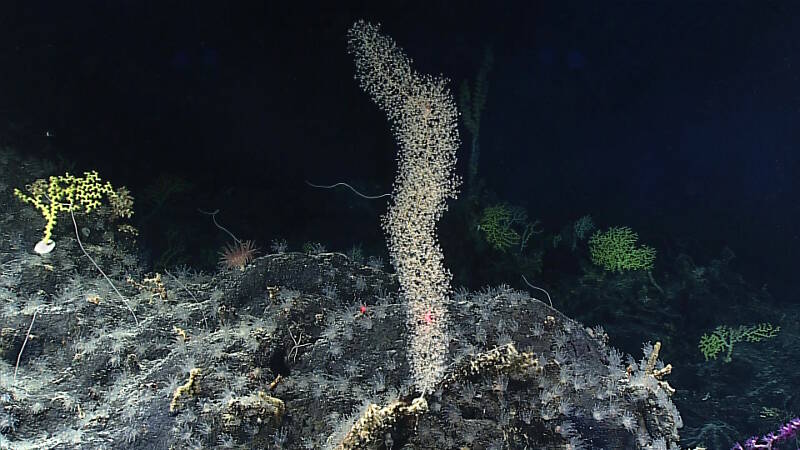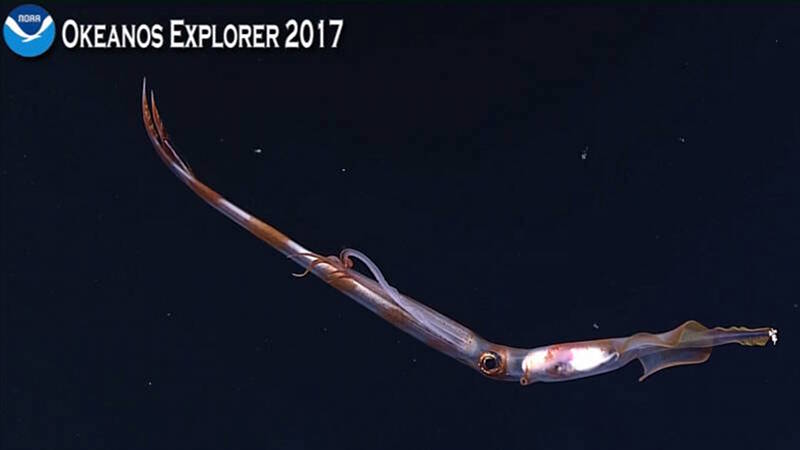This first dive started at 1,143 meters along the steep slope off the western ridge of Swains Island, within National Marine Sanctuary of American Samoa. The seafloor contained extensive pillow basalt outcrops and fragments coated in manganese iron oxide and interspersed with patches of thin sediment drape. The complex rock substrate was covered with anemones or possibly corallimorphs and populated with stony corals, cup corals, octocorals, and black corals; coral associates including crabs and brittle stars. Fish encountered early in the dive included a slick head and different species of eels. On rock surfaces and sediment patches were shrimp, blind lobster, hermit crab, and sea cucumbers. A sponge, Aspidoscopulia sp., was collected, which represented a new record for this region, and several other sponges were observed. Within the rock outcrops were patches of dead manganese-coated stony coral debris. At 1,114 meters, Deep Discoverer transitioned from patchy to high-density coral cover. A squid was observed prior to the transition from slope to ridge at about 1,100 meters. The ridge was punctuated by large mounds of pillow lava and boulders, often covered with abundant encrusting fauna. Several fish observed only on the ridge included an anglerfish, three types of eels, oilfish, rattails, black scorpion fish, and bristlemouths. New coral observations included the black coral with hermit crab associates and encrusting zoanthids. Other fauna included a sponge, sea urchins, and a swimming polychaete. Sea stars were only observed along the slope, perched on the side of rock faces. The homolid-type crab was found on several corals and rocks, often holding a hydroid or black coral fragment with its posterior-most legs, potentially serving as camouflage. Similar sized “yellow stoney†corals were observed, suggesting a single recruitment event, possibly following a disturbance. Large manganese-coated coral rubble, likely fallen from shallower depths, were found along the ridge. This dive was very interesting because it had potentially higher diversity and abundance of corals and other taxa compared to other dives conducted in the region, stressing the need for follow-up dives at similar depths in the future. Hopefully our next dive at Pao Pao Seamount will be as interesting and as abundant as this one!

